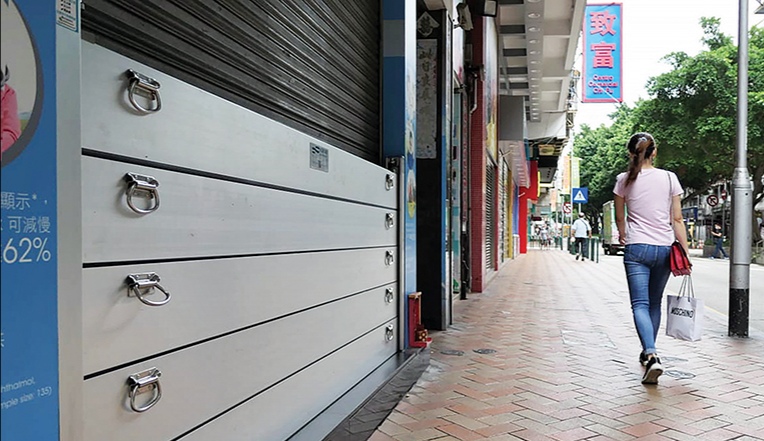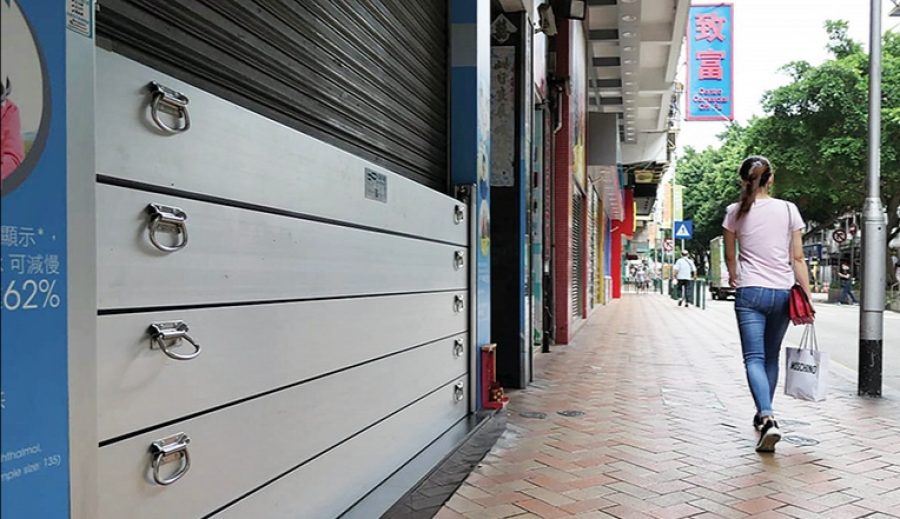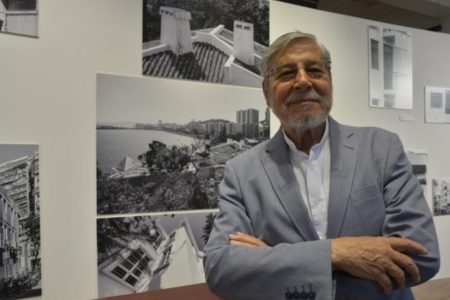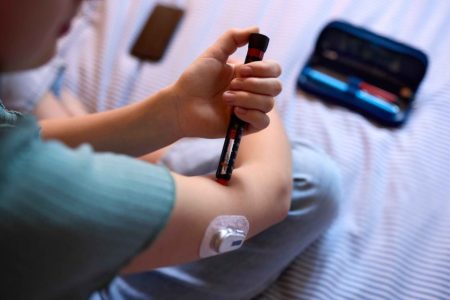The Macao Meteorological and Geophysical Bureau (SMG) insisted on Tuesday that it was necessary to hoist the No. 8 signal for Severe Tropical Storm Nangka despite the fact that the typhoon was located over 400 kilometres away from Macao at the closest when it was moving towards the southern island province of Hainan, due to its possible threat to Macao resulting from the fact that the typhoon and a monsoon were occurring simultaneously.
SMG officials pointed out last night that the wind speed recorded on Zhuhai’s Guishan Island in the Pearl River estuary between Macao and Hong Kong reached the level equivalent to the wind speed that triggered the hoisting of Macao’s No. 8 signal on Tuesday.
The weather bureau also said that it was the first time in five decades that it had issued the No. 8 signal in response to a far-away storm.
The weather bureau hoisted the stand-by No. 1 signal at 10 pm on Sunday, and raised the signal to No. 3 at 8 pm on Monday, before hoisting the No. 8 signal at 7:30 am on Tuesday when Nangka was located 420 kilometres south of Macao. The No. 8 signal remained hoisted for 11 ½ hours before the weather bureau lowered the signal to No. 3 at 7 pm on Tuesday, shortly after which the city’s public bus service was resumed and the three Macao-Taipa bridges were reopened to traffic.
By order of the Education and Youth Affairs Bureau (DSEJ) all schools remained closed on Tuesday. However, due to the relatively clement weather, many restaurants and shops stayed open.
The storm surge warning was cancelled at 10 am. No flooding was reported on Tuesday. However, the weather bureau said in a statement Tuesday night that due to “astronomical tide together with strong winds, flooding is expected in the Inner Harbour areas between 4 am and 9 am today. The highest flooding level will be below 0.30 metre, the statement.
The Macao-Zhuhai joint checkpoint on Hengqin Island was also closed after the hoisting of the No. 8 signal, due to the closure of the Lotus Flower Bridge. The checkpoint was reopened last night after the signal had been lowered to No. 3.
Secretary for Administration and Justice André Cheong Weng Chon, in his capacity as the acting chief executive, chaired a meeting of the government’s Civil Protection Operations Centre (COPC) in Taipa on Tuesday morning. Chief Executive Ho Iat Seng is in Shenzhen for a three-day working visit which will reportedly include a meeting with President Xi Jinping.
According to airport operator CAM, over 300 passengers were affected by the typhoon due to cancelled and delayed flights. The Macao Civil Aviation Authority (AACM) said that the typhoon left about 60 passengers stranded at the airport.
The Civil Protection Operations Centre (COPC) reported 13 incidents caused by Nangka, such as damaged sign boards and windows.
The civil protection authorities announced last night that Nangka caused one slight injury, a local woman who received outpatient treatment at the private Kiang Wu Hospital.
The government closed 20 public car parks in the city’s low-lying areas at 8:30 am on Tuesday, one hour after the hoisting of signal No. 8. They reopened at 7 pm on Tuesday.
The city’s six gaming operators also provided residents with a total of 3,800 free car parking spaces in their gaming resorts during the No. 8 signal
A total of 27 people used four of the government’s disaster shelters on Tuesday, the civil protection authorities said.
The Public Security Police (PSP) said that they recorded 11 violations by cabbies on Tuesday, and detected one case of passenger transport service provided by an unlicensed taxi.
‘Not just an exercise’
The civil protection authorities also pointed out that Tuesday’s hoisting of the No. 8 signal was the first after Macao’s new civil protection law – officially known as Civil Protection Legal System – took effect on 15 September. During Tuesday morning’s meeting at the Civil Protection Operations Centre, Cheong said that Nangka was a “real test” for the city’s civil protection system following the implementation of the new legal system. “It was not just an exercise,” he said.
According to the new civil protection law, the commander of the government’s civil protection operations is the secretary for security, as opposed to the commissioner-general of the Unitary Police Service (SPU) previously. However, SPU Commissioner-General Leong Man Cheong was the acting commander of Tuesday’s civil protection operations.
Hong Kong also defends hoisting of signal No. 8
Meanwhile, the Hong Kong Observatory also defended its decision to issue the No. 8 signal for 14 hours on Tuesday, even though Nangka caused next to no damage to Hong Kong, public broadcaster RTHK reported.
In Hong Kong, the No. 8 signal went up at 5:40 am, a few hours after the typhoon had reached its closest point to Hong Kong, about 440 kilometres south of the city.
Senior scientific officer Woo Wang-chun told RTHK that it was the first time since the 1960s that the observatory had issued a No. 8 signal in response to the storm that was so far away.
Meteorologists in Hong Kong said it was the right move to make, to ensure that people were safe given the potentially perilous weather conditions.
(The Macau Post Daily/Macau News)
PHOTO © The Macau Post Daily/Iong Tat Choi






